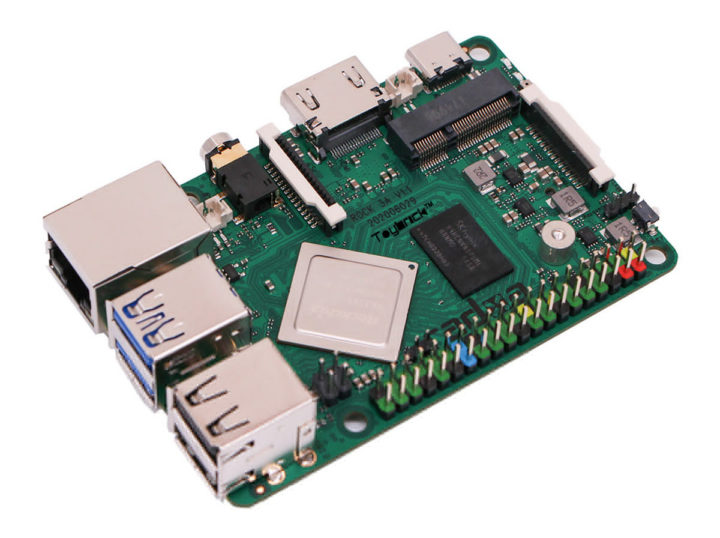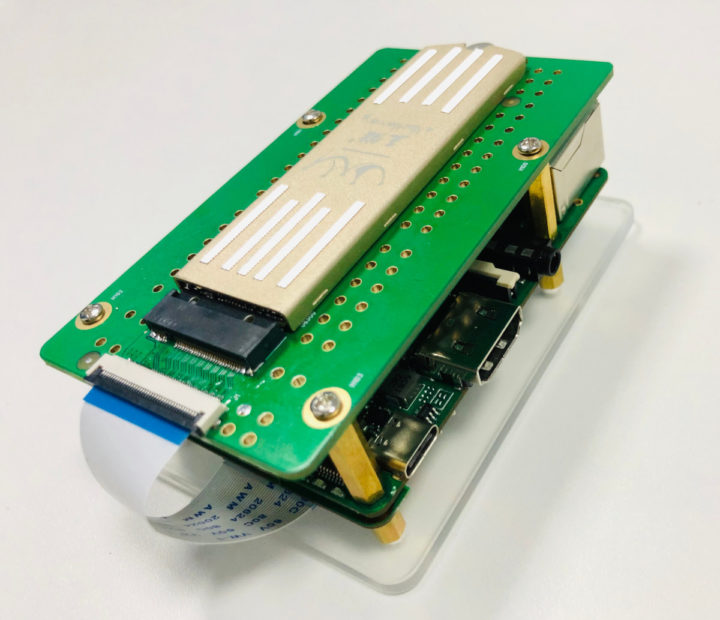Radxa ROCK 3A is a single board computer powered by Rockchip RK3568 quad-core Cortex-A55 processor that closely follows Raspberry Pi 3 Model B form factor like the early Rock Pi 4 SBC, but with a twist.
By switching from a Rockchip RK3399 to a Rockchip RK3568, the board loses some CPU and GPU performance, but gains extra I/Os with enabled the company to add an additional M.2 slot with PCIe to ROCK 3A board, meaning it’s now possible to attach one NVMe SSD and another M.2 module like a WiFi 6 M.2 card.
ROCK 3A preliminary specifications:
- SoC – Rockchip RK3568 quad-core Cortex A55 processor at up to 2GHz, with Mali G52 GPU, 0.8TOPS NPU
- System Memory – 2GB, 4GB, 8GB LPDDR4 3200MT/s, up to 1560MHz
- Storage
- Pluggable eMMC module
- MicroSD card slot
- M.2 M key socket for NVMe with PCIe 3.0 x2 lanes
- 4MB SPI flash with support for NVMe booting (TBC)
- Video Output
- HDMI 2.0 port up to 4Kp60
- 1x MIPI DSI connector
- Audio – 3.5mm audio jack, digital audio via HDMI
- Camera – 1x MIPI CSI connector
- Connectivity
- Gigabit Ethernet with PoE support
- M.2 E key for connectivity with PCIe 2.0 x1/SDIO/UART, including support for WiFi 6 cards
- USB – 2x USB 2.0 ports, 2x USB3.0 (1x OTG+1x HOST) ports both configurable in SATA mode with a SATA breakout cable
- Expansion – Color-coded 40-pin GPIO header mostly compatible with ROCK Pi 4 and Raspberry Pi 3/4
- Misc – RTC with connector for backup battery
- Power Supply – Via USB-C port with QC/PD power support through a “new generation QC/PD protocol IC”
- Dimensions – 85 x 54 mm
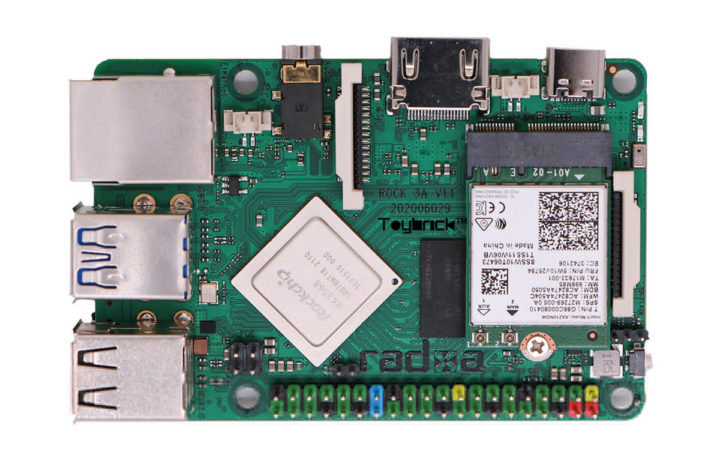
Radxa collaborated with Toybrick to bring Debian 10 support to the board, but third-party operating systems will also be provided with Manjaro Linux, Slackware Arm, etc.. being some candidates.
The storage option for the board can be found on the bottom with the MicroSD card socket, eMMC flash socket, and second M.2 socket on the right side of the board.
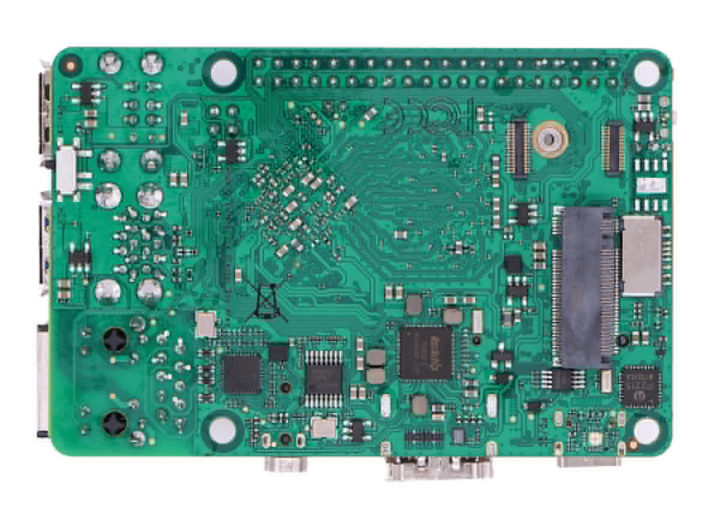
Another oddity is SATA support through the USB 3.1 ports. What kind of sorcery it is. We don’t have photos of the SATA expansion just yet, but you can read the second part of our in-depth RK3568 article which explains the processor comes with various multiplexed SERDES lanes two of which can be configured as SATA or USB 3.1 by software as shown in the diagram below.
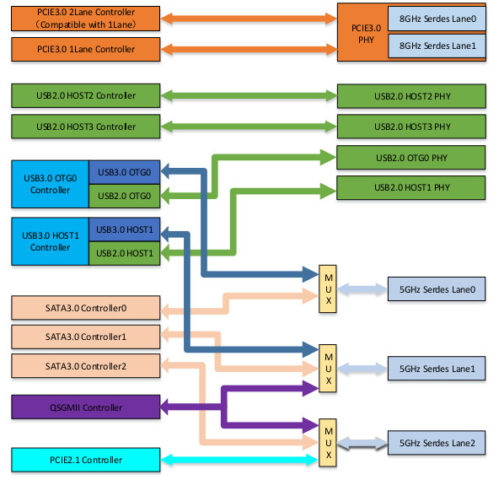
Hopefully, there are safeguards in place on ROCK 3A SBC to avoid hardware damage while connecting a USB device in SATA mode and a SATA drives in USB mode.
ROCK 3A board will match Raspberry Pi 4 pricing with the 2GB RAM version going for $35 US, the 4GB model for $55 US, and finally, the 8GB variant will sell for $75. The single board computer is not available right now with only a few early samples for developers. A larger batch will be manufactured at the end of August, I’d assume still for developers and enthusiasts, and we should probably expect the ROCK 3A to become more broadly available by the end of the year.

Jean-Luc started CNX Software in 2010 as a part-time endeavor, before quitting his job as a software engineering manager, and starting to write daily news, and reviews full time later in 2011.
Support CNX Software! Donate via cryptocurrencies, become a Patron on Patreon, or purchase goods on Amazon or Aliexpress


